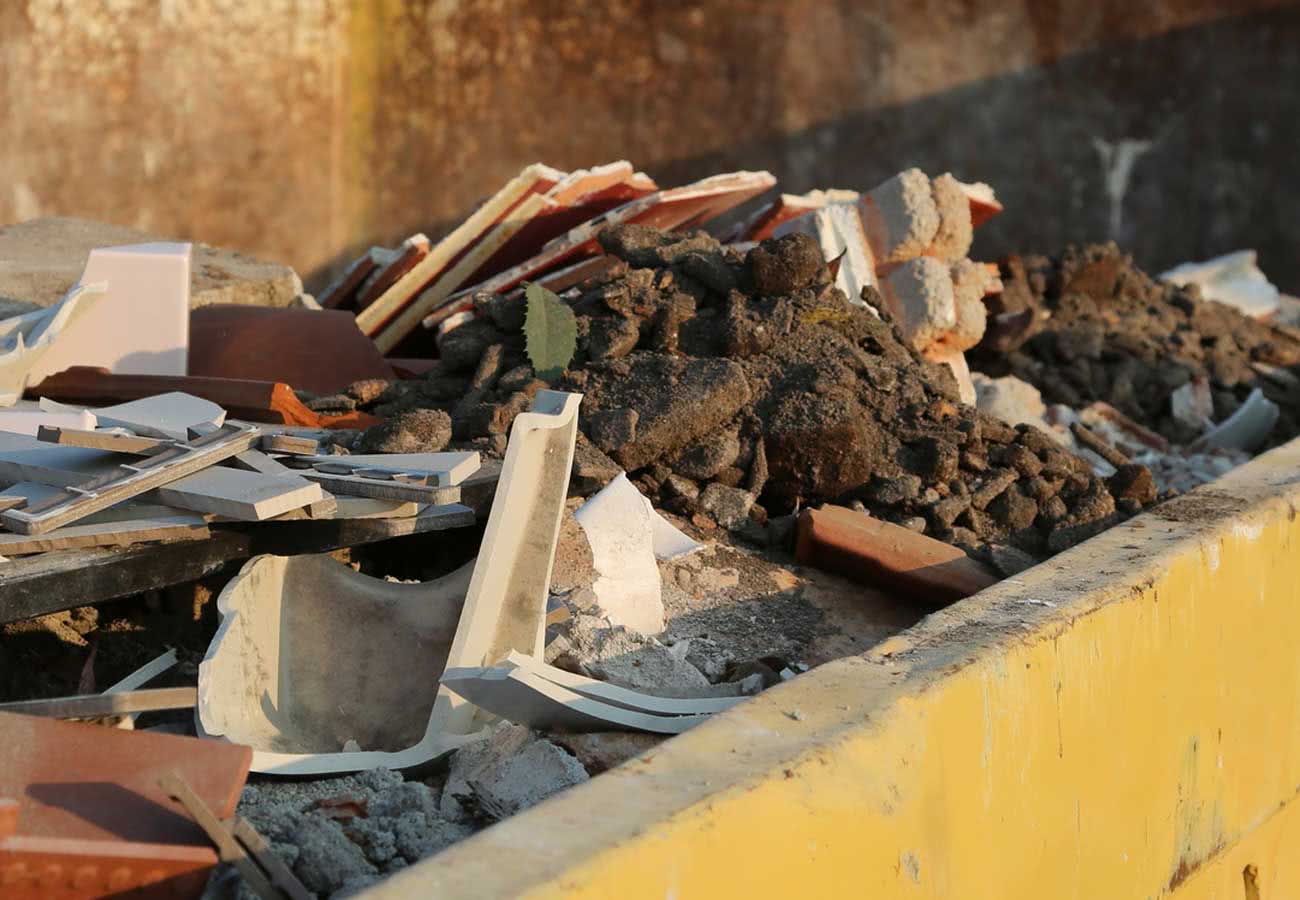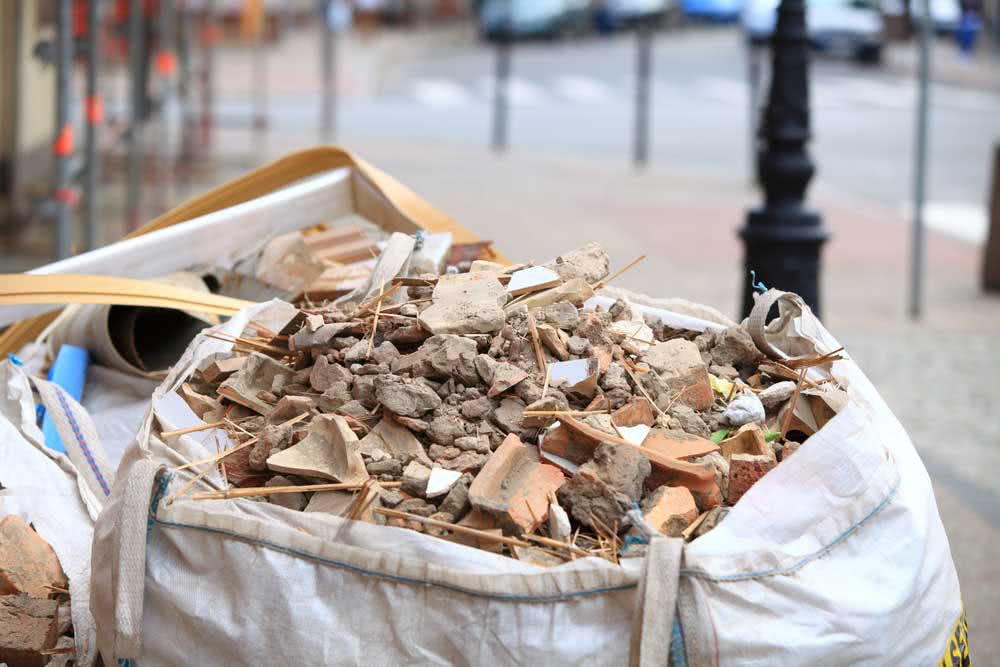Rubble disposal is literally a stone at the foot of big cities. Wherever you go, there they are: piles and piles of rubble that accumulate and impact the beauty of the streets, the health of the residents and the preservation of the environment.
So, if you are in the middle of a construction or renovation, know that the responsibility for the correct destination of the packaging is entirely yours.
Therefore, it is essential to understand all the steps that involve the correct disposal of rubble and, thus, contribute to the sustainability of the planet.
Come see the tips.
Importance of the correct disposal of rubble

Environment
The irregular disposal of rubble harms (and greatly) the environment. In addition to the potential risk of being carried away by the rains, increasing the incidence of floods, many types of rubble are considered toxic and harmful to the soil, plants and animals.
Health
Rubble also impacts people’s health. This is because when not properly disposed of the substances present in the rubble can contaminate the soil, reaching the human body through the consumption of contaminated water or food.
The accumulation of rubble in irregular areas also contributes to the proliferation of poisonous insects and animals, such as spiders and scorpions, which ends up impacting the health conditions of those who live close to these places.
Economy
Did you know that disposing of rubbish correctly has a positive impact on your pocket? That’s right! When the rubble is thought of correctly, the first measure to be taken is to reduce the leftovers and promote the reuse of materials.
Thus, the work becomes more economical and sustainable.
What the legislation says about it
First of all, it is important to know that the irregular disposal of rubble is considered an environmental crime and those responsible for this disposal must receive the penalties provided by law, usually fines that vary in value according to each state and municipality, in addition to the type of the amount discarded.
In the city of São Paulo, for example, the amount of the fine for anyone caught irregularly discarding rubble is R $ 15,000.
The body responsible for the rules on disposal, inspection and application of penalties is CONAMA (National Council for the Environment) based on Resolution 307/2002 and Law 12,305 / 2010.
The National Solid Waste Policy also serves as a guideline for the correct disposal of rubble.
Based on these federal resolutions, states and municipalities base their own laws on the disposal of rubble. One of them, common in practically all cities, is the ban on the disposal of rubble on public roads.
So, the first tip is to know your city’s solid waste policy.
For the use of buckets, for example, it is important that the contracted company has authorization from the city to carry out the activity. That way you ensure that the rubble of your work is not thrown anywhere.
And by the way, did you know that for each type of rubble there is a correct destination? Contaminating materials, such as paint cans and asbestos tiles, for example, must be sent to companies authorized to treat this type of waste or to landfills able to receive toxic materials.
Materials that can be recycled should be sent to companies such as recycling cooperatives, for example.
When using a legalized bucket, the waste is disposed of automatically by the contracted company. But it is important to remember that recyclable materials should not be mixed with contaminating materials.
So be careful when disposing and separate toxic materials in a safe place and away from those that can still be used.
Types of rubble

Rubble is different from ordinary residential garbage. This type of waste is almost always composed of solid, non-organic materials.
Examples of construction rubble are:
- Bricks
- Concrete and mortar
- Earth
- Metals
- Ceramic parts
- Paints and solvents
- Roof tiles
- Glass
- Plastics in general
- wood
- Cardboard
- Electrical wires
Each of these residues is classified according to their degree of reuse and the possibility of contamination. Check below the groups used to classify each type of rubble:
Class A
Class A type debris is that which can be reused in civil construction, either in the same work or in solid waste treatment units for construction.
This group includes materials such as tiles, bricks, ceramics, concrete, among others.
In the case of non-reuse, these residues must be sent to landfills suitable for this type of rubble.
Class B
Class B debris is one that can be recycled both in construction and for other purposes.
This is the case with materials such as plastic, cardboard, metals, wood and glass.
Class C
Class C solid wastes are those that cannot be reused or even recycled, as is the case with tempered glass, for example.
At the end of their useful life, these debris must be sent to specific landfills.
Class D
Finally, there are class D residues. These debris are characterized by toxicity and the possible damage they can cause to the environment and to humans.
In general, class D waste cannot be recycled or reused.
This group includes materials such as paint and solvent residues, asbestos-based residues, mercury lamps, among others.
How to properly dispose of rubble
There are three different ways to dispose of a construction site, especially those that are smaller and have little impact. Write down:
Home collection
It is possible to dispose of up to 50 kg of rubbish in the common trash. These residues must be stored in bags capable of supporting the weight.
Remembering that contaminating materials should not be disposed of in the common garbage. In that case, take it to an ecopoint closest to your home.
In the case of recyclable materials, the recommendation is to do the sorting and then send them to the collection points for selective collection.
Ecopoints
Many cities in Brazil have spaces popularly known as Ecopoints.
In these places it is possible to dispose of up to one cubic meter of rubble free of charge. To do this, just take the waste to the nearest point.
Bucket
In the case of a very large amount of rubble, it is necessary to hire a bucket rental company.
In general, these buckets remain for up to five days at the construction site. At the end of that time, the company removes the bucket by properly disposing of the rubble.
Tip: Consult company information before ordering the service. Many of them work in a clandestine manner, dumping work remains and debris in isolated places, such as rivers and forests.
Tips to reduce rubble

Better than discarding is reducing. So before you even think about how to dispose of rubbish properly, think about how you can reduce the amount of waste and even eliminate it from your work.
It is possible? Yes!
There are materials that significantly reduce the amount of rubble in a construction site. Want an example? The ecological brick.
Ecological bricks have a construction system very different from traditional masonry. In this method, the water, light and sewage networks are installed at the same time that the walls are raised, avoiding breakage. Another differential concerns the finish. These bricks do not require the use of plaster, plaster and even coverings.
Want more? So note: the steel frame construction system is also a great ally for sustainable works.
In this type of construction, the metal profiles form the structure of the house, while the walls are filled with made-to-measure concrete or plaster boards.
Zero waste!
In addition to rethinking the construction system, you can also take the opportunity to rethink the use of materials.
Prefer environmentally friendly materials, that is, that are non-toxic and that preferably can be reused or recycled. For example, use water-based paints instead of using solvent-based paints.
And finally, but still super important: plan each stage of the work. That way you avoid buying unnecessary or overdone materials.
Your pocket and the environment are grateful.



